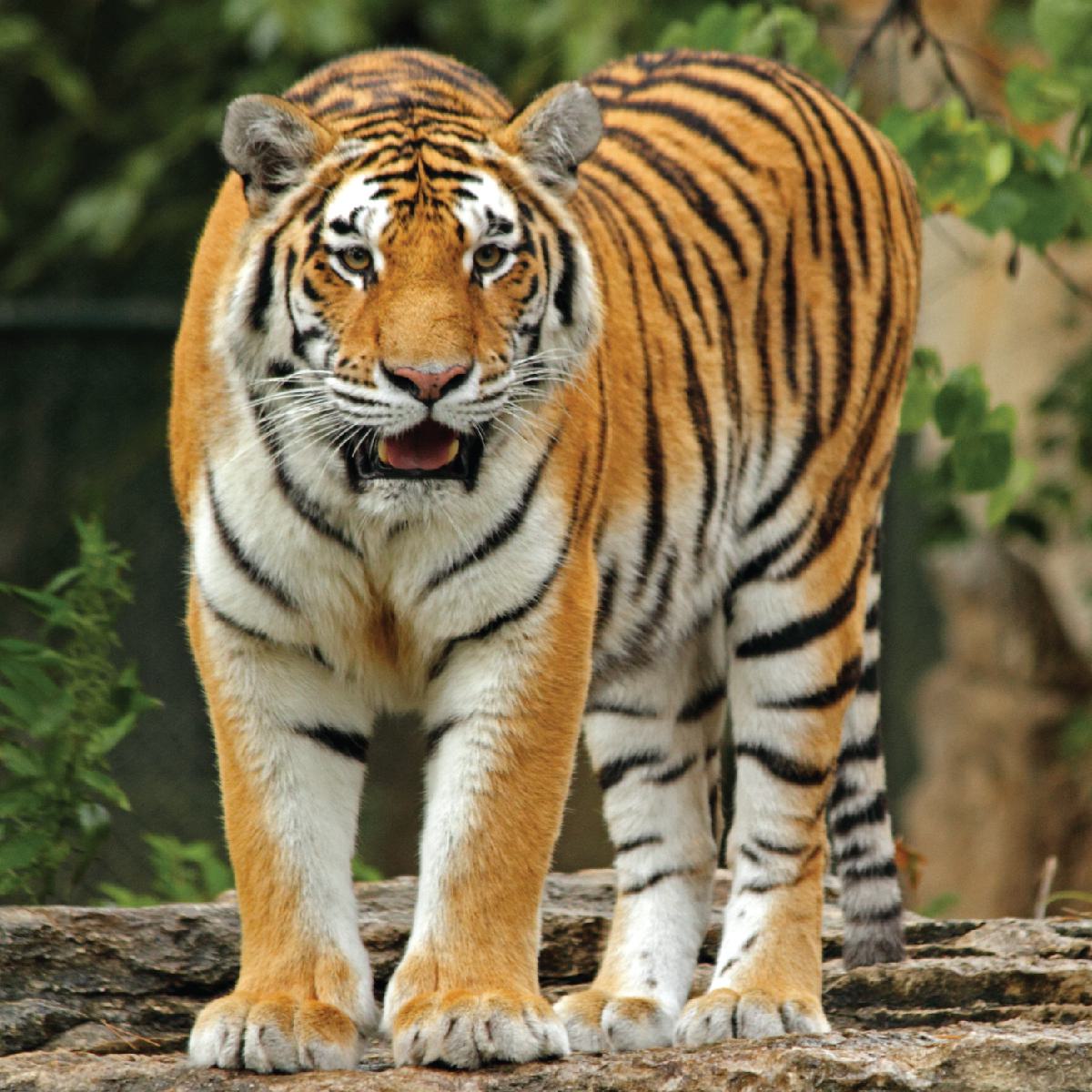
Amur tiger
Panthera tigris altaica
Did you know?
- The Amur tiger is part of the Felidae family, which they share with other big cats.
- Their name comes from the Amur River.
- They live in forest and bush-covered mountains in eastern Russia, China, and North Korea.
- Their paws act as snowshoes to travel through deep snow.
- They are at the top of their food chain in the ecosystems in which they live.
Adaptations
Tigers are the biggest cats in the world, and Amur tigers are the biggest subspecies of tigers. Their large size, thick fur coat, layer of fat on their flanks and belly, and extra fluffy ruff keep them warm in extremely cold environments.
Formerly the Siberian Tiger
There were once eight subspecies of tigers. Today, three are extinct. Three others are critically endangered, including the Amur tiger. It is estimated that only 350 to 450 Amur tigers survive in the wild. Besides being reduced in number, their range has also been reduced. Once, they lived throughout much of Siberia and surrounding areas, and for this reason they were often called Siberian tigers. Today, they are no longer found in Siberia or called by that name. Their "new" name comes from the Amur River, which flows through the middle of their current, reduced range in Russia.
Threat Level
- Unknown
- Common
- Near Threatened
- Threatened
- Endangered
- Critically Endangered
- Extinct in the Wild
Endangered
The Amur Tiger is considered to be facing a very high risk of extinction in the wild.
Range
Eastern Russia, northeastern China, northern regions of North Korea
Habitat
Forests, bush-covered mountains

We care about the amur tiger
The Saint Louis Zoo participates in the Association of Zoos and Aquariums Species Survival Plan for Amur tigers. This is a cooperative breeding program, with a number of zoos working together to ensure the survival of the species.
The SSP for tigers was the very first SSP created by the Association of Zoos and Aquariums. It served as a model for developing captive breeding programs for other animal species. Learn more about our conservation efforts.
Find this animal in Red Rocks

SAINT LOUIS ZOO ZONE
Red Rocks
At Red Rocks, you’ll view some of the world’s most powerful predators living near some of the world’s most graceful prey. Tigers, zebra and giraffes all share the natural rocky boulders and outcroppings as their territory. With shading trees and a bird or two among the mammals, Red Rocks is a great place to spend a day at the Saint Louis Zoo.

